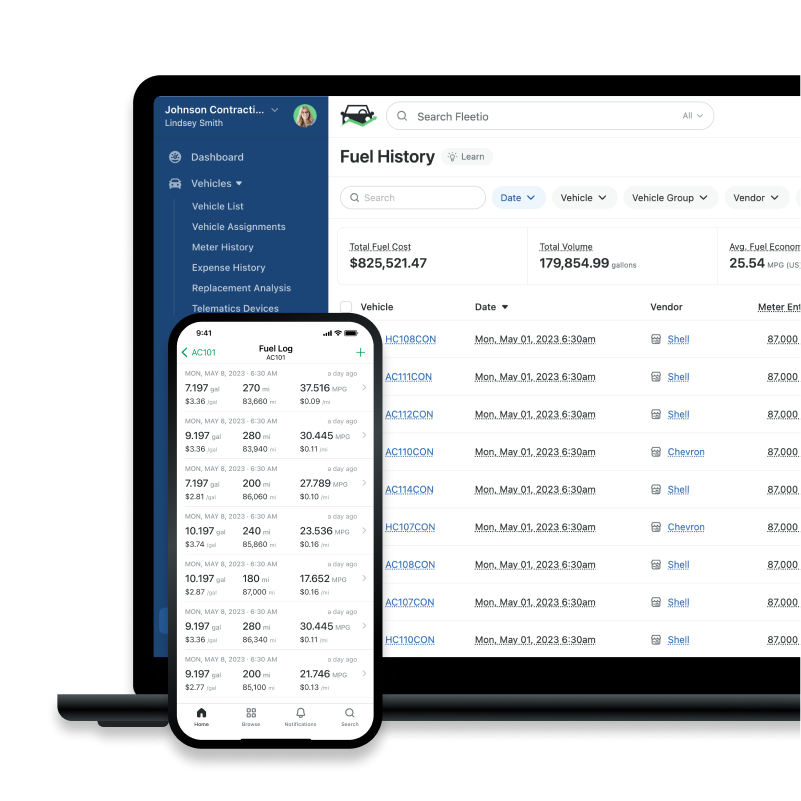U.S. Energy Dependency: Impact of Foreign Conflicts on Fleet
While the U.S. has ramped up crude oil production, it still relies heavily on imported goods derived from the exporting nations’ energy and production materials. With conflicts going on around the globe, the U.S.’s energy dependency could affect the availability and price of fleet assets, replacement parts and more.
Mar 27, 2024
9 min read

Energy security has become increasingly important in recent years as global conflicts contribute to supply chain disruptions. While the U.S. has ramped up crude oil production and exports, it still sits firmly in the energy dependent category as it relies heavily on a broad range of imported goods. “US trade strategy affects US energy security. When the US imports a product instead of producing it domestically, it frees up that part of its energy budget to use elsewhere in the economy,” according to Nature Energy. “At the same time, the imported product links the US to the energy security of the exporting nation.”
This type of indirect energy consumption can affect fleets in several ways, including difficulties with automotive parts procurement, as well as “higher electricity, fertilizer, and chemical prices due to gas shortages.”
The Current State of Crude Oil Pricing and Availability
While the U.S. reached an all time high of oil production at 13 thousand barrels per day in 2023 — a number that has since dropped — the 180 million barrels it sold in 2022 to “reduce” gas prices domestically have left oil reserves sitting below where they should be. In addition to oil production, the U.S. also purchased 13 million barrels in 2023 to help with replenishment efforts, though “U.S. crude oil inventories are 4% below the five year average for this time of year,” according to Oil & Gas 360.
Now we’re seeing gas prices once again rise with the “national average currently [sitting] at $3.28 per gallon,” according to Local News 8. In an effort to combat rising gas prices ahead of the election, the Biden administration is pulling a move from its 2022 playbook when it “ordered the EPA to lift near-term restrictions on E15 [...] to help lower soaring gas prices following Russia’s invasion of Ukraine,” according to Washington Examiner. Though it’s considered an eco-friendly fuel, “Regulations to reduce evaporative emissions that can contribute to ground-level ozone impact the ability to sell E15 during the summer ozone season,” according to the U.S. Department of Energy.
While this expansion can help fleets primarily running light-duty vehicles, it won’t provide the same assist to fleets running heavier vehicles or equipment. Vehicles prohibited from using E15 [include]:
- "All motorcycles
- All vehicles with heavy-duty engines, such as school buses and delivery trucks
- All off-road vehicles, such as boats and snowmobiles
- All engines in off-road equipment, such as [chainsaws] and gasoline lawn mowers
- All conventional vehicles older than model year 2001.”
Fleets running other alternative fuel options like electric vehicles (EVs), will likely also see a price hike in charging rates. “We increased our forecast prices for crude oil and petroleum products for the remainder of 2024 in our March Short-Term Energy Outlook (STEO) following the announcement that OPEC+ will extend the existing voluntary production cuts through the second quarter of 2024,” according to the U.S. Energy Information Administration. “We now forecast significantly less global oil production than world oil consumption through the first half of 2024, requiring draws on world petroleum stocks [which] tend to increase oil prices.” This, in turn, can increase charging costs.
Looking Forward
Interested in seeing what else could be in store for fleets this year? Check out our 2024 fleet industry trends!
Learn moreA Conflict-heavy Time
Now that we’ve covered the current state of crude oil reserves, let’s dive into how current conflicts can further exacerbate price hikes and availability of goods while negatively impacting fleet sustainability.
Russia-Ukraine War
The ongoing conflict between Russia and Ukraine doesn’t seem poised to come to a close anytime soon. “I think NATO now recognises that it is fighting a proxy war against Russia and Putin. We are happy to support Ukraine but there is zero appetite for any direct involvement,” according to defense analyst and strategic consultant, Nicholas Drummond, who specializes in land warfare. “The plan is very much to continue to support Ukraine - inflicting as much damage on the Russian Army and economy as possible while avoiding World War 3.” Biden seemed to agree with this sentiment in the opening to his State of the Union address, calling for continued support of Ukraine, short of boots on the ground.
One of these efforts include the increased sanctions the U.S. and E.U. have imposed on Russia, though despite these and previous sanctions, the country's economy has not suffered, which may be due in part to Russia selling oil at higher prices. “The industrialized countries gathered in the G7 had imposed a price cap on Russian oil transported by Western shipping companies or such cargoes insured by Western insurance companies,” according to Spiegel Business. “Nevertheless, Russia was able to sell its oil last year at significantly better prices than the planned cap of $60 per barrel. One factor for this was the capping of production volumes decided jointly by Saudi Arabia and Russia. Furthermore, despite the G7 price cap, the oil is apparently often transported by ships belonging to Western shipping companies.”
The top two importers of Russian oil are China and India, with shares at 45-50 percent and 40 percent respectively. The U.S. has been pushing for nearer, friendlier trade partners due to tensions with China, but imports over the last year were still upward of $420 billion, according to figures released by the U.S. Commerce Department. Additionally, “U.S. goods imports from India totaled $85.5 billion in 2022, up 16.7 percent ($12.2 billion) from 2021, and up 111 percent from 2012,” according to the Office of the United States Trade Representative.
| China | India | |
|---|---|---|
| Imported Goods | Dollars | Dollars |
| Electrical, electronic equipment | $126.68B | $12.08B |
| Machinery, nuclear reactors, boilers | $85.89B | $6.67B |
| Plastics | $20.16B | $1.13B |
| Vehicles other than railway, tramway | $16.41B | $2.70B |
| Organic chemicals | $8.39B | $3.86B |
Buy Domestic
Many of the goods the U.S. imports can affect fleet and business operations, and when nations the U.S. trades with pay higher prices for oil, it can quickly translate to higher prices for such goods. Additionally, as tensions rise with China, certain goods will likely be harder to import, causing issues with both supply and pricing. Switching to U.S.-manufactured goods whenever possible can help ensure more steady pricing and availability.
Israel-Hamas War
Similar to the Russia-Ukraine war, the conflict in Gaza looks to continue as the U.S. has thrice vetoed ceasefire proposals, instead drafting one that China and Russia vetoed due to nebulous language that fell short of “demanding a ceasefire,” according to United Nations News. In an interview, Biden declared that he wouldn’t abandon Israel, despite claiming that an invasion of Rafah would be a red line. As of March 25, however, “The United Nations Security Council adopted a resolution [...] demanding an immediate ceasefire between Israel and Palestinian militants Hamas after the United States abstained from the vote,” according to Reuters.
The conflict has been getting more heated with Hezbollah’s backing of Hamas and Iran’s backing of Hezbollah. “Hezbollah began attacks along Lebanon’s border with Israel on Oct. 8 after 17 years of relative calm, a day after Hamas launched its attack on southern Israel that triggered the ongoing war,” according to WTOP News. “Hezbollah officials have said they will stop attacking Israeli military posts when Israel’s attack on Gaza ends.” Meanwhile, “Israel's counter-strikes [on Hezbollah have increased] in intensity and reach, fuelling fears the violence could spin out of control even if negotiators achieve a temporary truce in Gaza,” according to Reuters. “Israeli Defence Minister Yoav Gallant indicated in February that Israel planned to increase attacks to decisively remove Hezbollah fighters from the border in the event of a Gaza ceasefire, although he left the door open for diplomacy.”
The broadening conflict has already had a negative effect on supply chains that will likely only get worse. “The Iran-backed Houthi attacks on shipping are having a disruptive impact. Calling the aggression in the Red Sea ‘a major maritime chokehold,’ [Adel Hamaizia, a research fellow in the Middle East Initiative of the Kennedy School’s Belfer Center for Science and International Affairs] said roughly 30 percent of global shipping has been affected, resulting in a 43 percent drop through the Suez Canal and a 60 percent increase around Cape of Good Hope, a longer and vastly more expensive route,” according to The Harvard Gazette.
Not only does this conflict affect the global supply chain, it can also impact oil prices further. “Some experts expect oil prices to increase significantly if the conflict escalates, drawing in Iran and other Middle East producing countries. As an example, the accounting firm EY’s chief economist, Greg Daco, predicted that ‘oil prices could surge well into [...] the triple-digits and market volatility could skyrocket in the most severe scenario of an uncontained Israel-Hamas war’,” according to global advisory firm Stout. “Global inflation could also rise, climbing 1.5 percentage points above EY’s baseline 2024 forecast due to higher energy prices.”
Control Consumption
Whether you’re fueling with gas or electricity, prices are set to increase due to reduced crude oil availability. Tracking and monitoring fuel consumption with fleet management software or using a fleet fuel log and keeping up with charging trends can help fleets adjust to price increases by improving driver behavior, optimizing routes and tailoring charging schedules to align with off-peak charging.
Prepare, Don’t Panic
The best way fleets can prepare for the current — and potential — impacts of foreign conflicts in terms of U.S. energy dependency is to stay informed and optimize the fleet’s fuel consumption. Using fleet management software (FMS), fleets can monitor usage trends and quickly spot issues causing increased consumption, including asset, routing and driver behavior issues. Additionally, be forward thinking around parts and asset procurement with strategic planning that allows for an easy pivot should delays arise.
Fight Fuel Price Inflation
Get your fleet in the best position to combat rising fuel costs.
Find out how
Senior Fleet Content Specialist
As a Senior Fleet Content Specialist at Fleetio, Rachael Plant uses her near decade of industry experience to craft practical content aimed at helping fleet professionals tackle everyday challenges with confidence.
LinkedIn|View articles by Rachael PlantReady to get started?
Join thousands of satisfied customers using Fleetio
Questions? Call us at 1-800-975-5304

